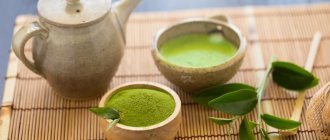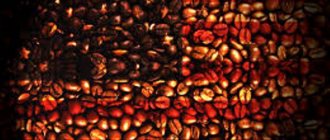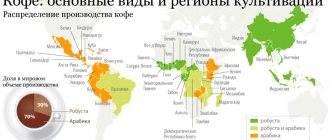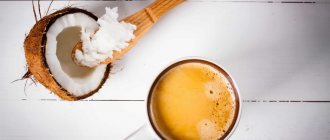Description of the plantation
Satria is a small family farm located halfway between Ubud and Lake Batur. The advantageous position allowed its owners not only to grow coffee, cocoa and spices, but also to show their farm to tourists, receiving additional income. In addition to a tour of the property, you will be offered to buy coffee and tea in a local store. Farmers speak six languages, including Russian (at a basic level). So you won’t have any problems in mutual understanding. I'll tell you about prices a little later.
What grows on the plantation
If you want to see a typical coffee plantation, you will be a little disappointed. Satria is more like a botanical garden or a large village vegetable garden. A variety of crops grow here along neatly laid paths.
You will be able to see:
1. Fruit
- Real durian on a tree
- Mangosteen
- Dragon fruit growing on a cactus
- passion fruit
- Bananas
- Pineapples
- Coconut
2. Spices:
- Carnation
- Cinnamon
- Vanilla
- Turmeric
- lemon grass
3. Other crops and plants:
- Cocoa
- Sugar cane
- Ginseng
- A real mimosa that closes its leaves when touched
- Tobacco
- Rosella
Of course, here you can see a real coffee tree with ripening berries. The farm is also home to several musangs who produce the famous Luwak coffee.
Coffee production process on a farm
Coffee on the plantation is processed using ancient methods. The berries are picked only by hand, selecting the ripest ones. After all, the fruits do not ripen at the same time; while some are ready for picking, others may still be completely green. Then the grain is processed.
The process consists of several stages:
- Drying
- Freeing grains from shells
- Toasting
- Grinding
The berries are dried here naturally, under the sun. You will be able to see large pallets of coffee that is in various stages of drying. In other containers, green grains are stacked, ready for further processing.
Coffee beans are roasted on this farm in huge frying pans. They stand on a traditional village stove, which is heated with wood. The process lasts more than an hour, during which time the grains should be constantly stirred. Children or old people do this.
The finished roasted coffee is poured into a large mortar, where it is crushed with a huge pusher. Then the grains are sifted through a sieve. The result is a very fine powder. When brewing, it leaves marks on the cup. But the taste develops faster than regular ground coffee. When visiting a plantation, you can try grinding coffee yourself in a mortar and see how hard work it is.
Separately, we should talk about the preparation of Luwak coffee. Cleaning the berries from the pulp occurs in the gastrointestinal tract of the musang. Animal excrement with undigested grains is collected and washed several times. They are then dried in the sun and prepared like regular coffee. At the farm they will show you what Luwak looks like in animal excrement and washed grains.
The plantation owners claim that their Luwak is “wild”, produced by free musangs. Excrement is collected in the mornings, on the plantation grounds and in the nearby forest.
Tasting
At the farm you will be invited to taste different types of coffee and other drinks. The tasting takes place on an open terrace with long wooden tables.
You can try drinks such as:
- Classic Balinese coffee
- Ginseng coffee with cream
- Vanilla coffee with palm sugar and cream
- Coconut coffee with palm sugar and cream
- Natural cocoa
- Mocha - a mixture of cocoa and Balinese coffee
- Lemongrass tea
- Rice tea (toasted rice grains, poured with boiling water, which can be eaten at the end)
- Ginger tea to boost immunity
- Rosella tea for lowering blood pressure
- Saffron tea
- Ginseng tea
- Mangosteen tea
- Coconut tea
The famous Luwak coffee is not included in the tasting, you will have to buy it. The cup costs 5,0,000 rupees. For those who smoke, there is also a surprise at the plantation. You can taste local tobacco mixed with cloves. The cigarette is made right in front of you. If you are hungry, you can also have a snack in the restaurant.
Shop
After the tasting, you will be invited to go to the store and buy your favorite drinks to take home. In addition to tea, coffee and cocoa, they sell spices, chocolate, cocoa butter, tobacco, fruits, paintings, and souvenirs.
Prices in the store are higher than in Ubud and other cities:
- Tea from various herbs and plants - 90,000 rupees per 200 grams
- Coffee with various additives – 120,000-160,000 rupees per 200 grams
- Coffee with cocoa (mocha) – 11,000 rupees per 200 grams
- Luwak coffee – 260,000 rupees per 100 grams
- Cocoa butter – 110,000 rupees per 200 ml
- Chocolate bar weighing 200 grams – 90,000 rupees
What is plantation coffee?
It is produced in all major coffee growing regions. There are two main definitions of plantation coffee.
- First. Plantation coffee is coffee that is grown, harvested and processed within the same plantation. Coffee may contain beans of one Arabica variety; less commonly, there is a mix of several varieties that grow within the same farm.
- Second. The concept of plantation is expanded to a single geographic area. For example, the famous Jamaica Blue Mountain is grown only in one region, but by different farmers. This coffee has plantation status.
A single generalized definition can be given.
Plantation coffee is a variety grown within a single area with similar climatic, geological and geographical characteristics that create the flavor profile of the beans in that limited area.
How to read plantation coffee names correctly?
The unusual sound of names can be confusing. Meanwhile, important information for us, consumers, is encrypted in the name of the coffee.
- The country of origin must be indicated. Its name comes first.
- Next, the region of cultivation and/or the type of beans from which this type of plantation coffee is made is indicated. For example, Uganda Sipi Falls means that the coffee is expressed in Uganda, at the Sipi Falls plantation. The name Tanzania Peaberry refers to Peaberry beans harvested in Tanzania.
Many single-origin coffees are plantation varieties.
For example, Sumatra Mandhelling or Malawi Pamwamba. But not every single variety is classified as a plantation variety. The Santos variety, which is very widespread in Brazil, is collected on various plantations, and its cultivation is carried out on a large scale. So the name - Brazil Santos (Sanchos) - means a single variety, but it is collected from different plantations and farms and is not a plantation variety. The taste depends on the quality of the grains, climatic conditions and growing habits. Therefore, plantation coffee provides a wide range of taste sensations, from the gentle and delicate coffee of the Caribbean with fruity notes to the expressive and thick African varieties with their base notes of chocolate and cocoa.
How to get to the plantation
Of all the southern resorts (Kuta, Seminyak, Legian, Sanur, Nusa Dua and Jimbaran), the road passes through Denpasar. Therefore, I will describe the route from this city. I will also give a route from Ubud for those who travel from there.
From Denpasar
The distance from Denpasar to the plantation is approximately 40 km, the journey will take 1 hour 20 minutes.
- Take the northeast highway – Jl. Raya Batubulan and head towards Ubud (approx. 11 km).
- Then turn right onto Jl. Ambarwati No.1. (look for a small white cafe with a tiled roof and a small altar at the crossroads).
- After 1 kilometer you will find yourself at an intersection with Jl. Raya Mas. Turn left on it. You won’t be able to pass by, as the asphalt road ends further.
- Drive straight for 2 kilometers until you turn to Jl. Raya Teges, and turn right there. Here, too, it is difficult to confuse the direction - in the middle of the intersection there is a noticeable white stone monument with the image of the god Vishnu.
- After 2.3 km turn left onto Jl. Raya Dr. Ir. Sukarno. There is a sign before the intersection. You need to move towards Kintamani. There is also a large stone monument in the center.
- Drive along the main road and don't turn off anywhere. After 12.7 km you will reach the junction with Jl. Tirta, where you need to turn right. Here, again, there is a stone statue of Vishnu that cannot be missed. The turn is right in front of her.
- After 2.5 km of driving along the main road you will arrive at the coffee plantations. Pay attention to the left side of the road - before entering you will see a stone sign Satria, behind which there is a parking lot.
Public transport does not go directly to the plantation. But you can take a bus to Ubud and from there take a taxi or rent a car. Kura Kura buses from Kuta leave for Ubud every two hours. The first flight departs at 10 a.m. and the last at 10:30 p.m.
You can also get to Ubud by Perama buses.
They depart from the following cities:
- Kuta – 4 flights at 6.00, 10.00, 13.30, 16.30. The fare costs 50,000 rupees.
- Sanur – 4 flights at 6.30, 10.30, 14.00, 17.00. Fare 40,000 rupees
- Lovina - one flight at 11.30. The ticket will cost 125,000 rupees.
From Ubud
The distance from Ubud to the Satria coffee plantation is 16.5 km, the journey will take no more than 30 minutes.
The route to the plantations is as follows:
- Leave the city on Jl. Raya Ubud eastbound
- After approximately 1 km, at the intersection with a large white sculpture, turn slightly left onto Jl. Gn. Sari
- After another 1.2 km, at a double intersection, turn left onto Jl. Raya Laplapan
- After 800 meters this street becomes Jl. Raya Pejeng Kawan, continue straight ahead.
- After another 4 km there will be a small intersection, turn right at it, onto a road with good asphalt
- After 400 meters, turn left at the intersection onto Jl. Raya Tampaksiring. The further route is the same as from Denpasar.
Upcoming trips:
Brazil
Date: June 13 – 21, 2019 Similarities: https://www.coffeeorigintrips.com/brazil-trip/
Sumatra
Date: June 13 – 21, 2019 Similarities: https://www.coffeeorigintrips.com/sumatra-trip/
Ethiopia
Date: November 26 – December 3, 2019 Similarities: https://www.coffeeorigintrips.com/ethiopia-trip/
Travel program
All trips include visits to coffee growing regions from large producers, cooperatives to small farmers, as well as visits to wet and natural coffee processing stations. Meet coffee exporting companies and other key people in the coffee industry.
What can you see nearby
It won't take long to explore Satria Coffee Plantation. You can see all the plants, taste drinks and shop in the store in 2 hours. Therefore, I advise you to include other attractions in your trip.
Near the coffee plantation you can see:
Tegallalang Rice Terraces.
Some of the most famous, beautiful and frequently visited terraces on the island.
Pura Tirta Empul Temple.
One of the main temples of the island, its foundation date is 926. There are three pools of holy water inside the temple. According to legend, the spring was created by the warrior god Indra.
Gunung Kawi Temple.
The complex of royal tombs of the Udayan dynasty dates back to the 11th century.
Temple of Pura Mengening.
Temple complex with a sacred spring, from the time of King Anak Ungas. There are several very ancient statues here, the age and origin of which are unknown.
Temple of Pura Pegulingan.
Another Balinese shrine dating back to the 8th century. In the center of the temple there is a large octagonal stupa, which is considered the most important structure of the complex. Tourists rarely enter the temple; it serves mainly for religious ceremonies.
Pura Penataran Peninjoan Temple.
It is located on a hill, three kilometers northeast of the plantations. It offers beautiful views of the surrounding area.
Museum of Art (Museum of Art Jero Bang Pinatih).
Here you can see a small family-type temple, a real owl and a mongoose. The museum displays various folk art products made of wood, bone, and stone.
Coffee from Asia, India and Africa
Coffee cherries from small Asian plantations are still picked and processed by hand. Excellent Arabian coffee is cultivated in the mountains of Yemen and Saudi Arabia. In Vietnam, on the contrary, low-quality coffee grows, which is consumed in blends and blends.
Indian raw materials are used for coffee blends. The famous monsoon malabar with intense notes of tobacco is obtained as a result of the exposure of monsoon winds and rainfall to the harvested coffee cherries.
Africa is considered the historical homeland of coffee. And today in Ethiopia you can find wild thickets of coffee trees. The drink, prepared from the Harrar and Jimma varieties, harvested in Ethiopia, has moderate sourness and a grape aftertaste. Kenyan coffee has a fruity aroma and floral tones. Thanks to modern technology, the coffee industry has been growing rapidly here over the past 10 years.
The most expensive type of coffee, kopi luwak, is produced in Indonesia and the Philippines. It is obtained by a specific processing method: coffee cherries processed by the musang animal are washed and dried. The islands of Sumatra, Sulawesi and Java supply Arabica and Robusta with a bright woody taste.
Despite the fact that coffee does not grow in Italy, one of its most popular types is Italian. It was here that the classic method of brewing this invigorating drink was invented. Italy is famous for its coffee production throughout the world. The subtleties of grinding, roasting and blending are passed down from generation to generation in local family companies.
Connoisseurs of real coffee distinguish between varieties that grow in the highlands and plateaus. Try to find the differences by treating yourself to a flavorful drink from different parts of the planet!
This is also interesting:
- Hot chocolate with marshmallows and cinnamon Marshmallows are a confectionery product similar to small marshmallows. Classic marshmallows are made from corn syrup and gelatin, which distinguishes them from marshmallows, the main […]
- Australian style coffee. Australian coffee is an unusual recipe with lemon and orange zest, flavored with the spicy aroma of cloves. It has an amazing smell and taste. A true coffee lover must [...]
- How to choose a coffee service True coffee connoisseurs rightly believe that in order to fully experience the taste and aroma of this drink, it must be drunk only from the utensils that are part of the coffee set […]
- How to make coffee liqueur at home Coffee liqueur is traditionally considered a woman's drink. However, the male sex is not averse to drinking a couple of glasses of this drink, especially after a hearty lunch. Nowadays there are many types of coffee […]
Useful tips for visiting plantations
To properly organize a trip to the plantation, I would advise the following:
- It is best to come here in the morning, while there are not many tourists yet.
- I advise you to be careful with your purchases in the store. Here you may be offered something completely different from what you tried at the tasting. Coffee with additives (vanilla, ginseng, coconut) here is of very low quality, often just fakes (a mixture of instant coffee, dry cream, palm sugar and flavorings). Tea of different flavors are low-grade leaves, almost half mixed with jaggery. Even in sugar-free varieties you can find white crystals.
- If you are not afraid to overpay, buy regular coffee without additives. Luwak is also good, but very expensive.
- It is better to plan an excursion for 2-3 hours. It is best to visit the plantation on the way to Lake Batur, Pura Empul Temple or other attractions.
Satria Coffee Plantation will appeal to people who are interested in rural life and traditional Balinese farming. It will also be of interest to those who want to see how familiar products grow in nature (coffee, cocoa, ginseng, cloves, cinnamon, etc.). It’s worth coming here with children; for them, the excursion will not only be fun, but also an excellent lesson in botany in the open air.
For more information about coffee plantations, read the section How coffee is grown in Bali: coffee plantations on the island
Interested in learning more? Read the section Attractions in Bali
Plantation coffee: our conclusion
- Plantation varieties include grains grown, harvested and processed within a single territory, limited geographically or legally.
- The taste of plantation coffee can vary greatly.
- The names of varieties often contain geographical signs: where exactly the crop was grown.
- Cost – from 250 rubles per 100 grams of grains.
- It is better to purchase certified coffee. The certificate is a guarantee of the quality and authenticity of plantation grain.
Coffee plantations in Brazil
Photos and text by Peter Lovygin When NESCAFE invited me to fly to Brazil to watch how coffee is harvested, the first thing I thought was “Well, why the hell do I need all this?”, and I agreed to the second thought. After all, watching others work is a very enjoyable experience.
From Moscow to Paris, from Paris to Sao Paulo, from Sao Paulo to the town of Vitoria, where people walk from the ramp to the airport along the runway. This is my second time in Brazil - from the first I only remember the meeting with Ronaldo, the constant rain in Rio and the most important acquaintance for me.
Vitoria is sad and depressed. Especially in the rain. But how I missed many South American gestures: the downward eyelid, which signifies danger and caution, and the raised thumb, which among Brazilians means almost everything.
In the morning the weather returned to normal and we moved towards the plantations. Three hours to the God-forgotten semi-Polish settlement of Agva Branca, lost among the “sleeping elephants” - that’s what I call these stone hills. Here a character named Carlos appeared, a man with the appearance of Richard Gere and Dan Petrescu - a descendant of Polish settlers, a planter and landowner. Carlos went to show us his lands. Together with Carlos his whole family, a personal photographer (for some reason!), an English teacher from a local school and a couple of her students who wanted to look at the foreigners went along.
The show lasted three hours - Carlos had so much land. 140 hectares and 130,000 coffee trees on them. Each tree requires up to 10 liters of water per day. In every row of coffee plantings, someone was moving frantically, harvesting the crop. One could stop and ask: “Whose land is this?” "Marquise de Carlos!" - they would answer in the bushes.
Carlos explained something for a long time about irrigation technology and careful selection of grains, but for you, my wonderful readers, I will not go into details, but will tell you “in a nutshell and in a nutshell.”
For example, this is what ripe coffee beans look like, just picked from the branch. If you remove the husks from them, they will even taste sweet. Each tree produces 5 kg of coffee - and a total of 20 coffee mugs:
I would have climbed the mountain long ago and painted the “elephants” eyes, ears, ... Well, or at least I would have written some kind of curse word or declaration of love.
I remember seeing a similar Stone in Colombia: between the settlements of El Peñol and Guatape. It has huge GI letters on its side. It turns out that Guatape and El Peñol argued for a long time about who owns this work of nature, until finally the Guatape people climbed onto the Stone and began to write the name of their settlement on it. The El Peñols saw this through a telescope and sharpened their knives towards the Stone, drove the Guatapines off it - but one and a half initial letters of the word Guatape remained on its surface.
And this is a nursery of coffee bushes. Very small trees are grown here. The ridges with cylinders of soil and seedlings tightly fitted to each other are crowned with the upward-pointing butt of a Brazilian peasant woman. She was not included in the frame, sorry:
In the morning we arrived at the grain drying facility. They are brought to the plantations and loaded into huge cylinders, which are spun from the inside by specially trained Brazilian squirrels. How the proteins do not burn inside there is still unknown to science. Then the grains are packed into bags and sweaty muchachos load them onto transport to the warehouse:
As a result of roasting, coffee acquires its famous dark shade...
The final chord was the ascent to the Cross. Any locality in Brazil that has a mountain is crowned with a Cross or a Statue of Christ on it. This is the Law. Behind the gate with the inscription “The mountain brings us closer to God” there was a view of the whole of Brazil - from border to border. And the Brazilian landscape is wonderful - it’s a pity I’m not Levitan to depict it with dignity...











